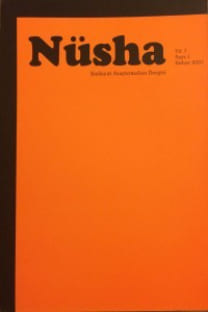KUZEY AFRİKA'DAKİ AMÂZÎG (BERBERî) KÜLTÜREL HAREKETİNE SOSYO-TARİHSEL BİR BAKIŞ
Kuzey Afrika, yerliler ile temas halindeki çeşitli kolonileşmelerin özel bir karakter verdiği bir bölge olarak bilinmektedir. Antik çağlardan beri varlığı devam eden Berberîler ya da Amâzîg bölgenin yerli nüfusunu oluşturmaktadır. Bu makale Amâzîg dilinin ve kültürünün durumuna, özellikle Amâzîg'in en yüksek oranda bulunduğu iki ülke olan Fas ve Cezayir'in anayasalarında Amâzîg dilinin resmen tanınması çağrısına ışık tutacak bir girişimdir. İlköğretim okullarında Amâzîg dilinin öğretimi gibi yerli dilinin ve kültürünün geleceğine dair iyimser olmaya yeterli sebepler olmasına rağmen pan-Arap milliyetçilerinin ideolojik arka planına daha yakından bakmak Amâzîg dilinin ve kültürünün sürdürülmesini ve gelişmesini garanti altına alacak herhangi bir ciddi devlet niyetinin üzerindeki şüpheleri kaldıracaktır.
Socio-historical perspective on the Amazigh (Berber) Cultural Movement in North Africa
North Africa has known various colonizations which in contact with indigenous ones have given the area a special character. One continuing presence since antiquity is that of the Berbers, or the Imazighen, the indigenous population of the area. In this article an attempt is made to shed light on the status of the language and culture of the Imazighen, and in particular on the recent calls for official recognition of the Amazigh language in the constitutions of the two countries with the highest presence of Imazighen, namely Morocco and Algeria. Although some recent developments, like the teaching of the Amazigh language in primary schools, give reason enough to be optimistic about the future of the indigenous language and culture, a closer look at the ideological background of pan Arab-nationalists casts doubts on any serious government intentions to guarantee the maintenance and development of the Amazigh language and culture.
___
- Brett & Fentress. The Berbers. Oxford: Blackwell Publishers, (1996: 3).
- Brett, Michael & Elizabeth Fentress 1997. The Berbers. London:
- Blackwell Publishers. Camps, G. (1995), Brett & Fentress (1996).
- CAMPS, G., Les berbères: mémoire et identité. (2nd ed.) Paris: Errances, 1995.
- DONNET, J., Renaissance berbère au Maroc. Le Monde Diplomatique, janvier 1995.
- ECO, U., 1993, "Ricerca délia lingua perfetta nella cultura europea", Laterza, Rome. Translated by Fentress, J. "The search for the perfect language", Blackwell, Oxford, 1995.
- El Aissati, A. 2005. "A socio-historical perspective on the Amazigh (Berber) Cultural Movement in North Africa", Afrika Focus. , 1-2.
- FISHMAN, J., 1990. What is reversing language shift (RLS) and how can it succeed? Journal of Multilingual and Multicultural Development 11, 5-36.
- HADDADOU. L'Etat algérien face à la revendication berbère: de la répression aux concessions. In Glottopol. Revue de sociohnguistique en ligne, 1, 2003, pp. 131-138.
- http://asrdc.utexas.edvVasmc/coun(ries/indonesia/ConsÜndonesia. html
- http://www.congresmondial-amazigh.org
- http://www.constitution.org/cons/natlcons.htm
- http://www.ethnologue.com
- http://www.mondeberbere.eom/mouvement:charte.htm
- www.gouv.sn/textes /constitution.pdf
- ISSN: 1303-0752
- Yayın Aralığı: Yılda 2 Sayı
- Başlangıç: 2001
- Yayıncı: Oku A.Ş.
Sayıdaki Diğer Makaleler
Linguistic Connotations of "The Heaven and The Earth" in The Qur'an (An Analytical Study)
MALTACADA ARAPÇANIN ÜRETKENLİĞİ
Müzik ve Ritmin Birlikteliği: Muhammed el-Kaysî'nin Şiirlerine Eleştirel Bir Bakış
The Importance of Arabic at the Understanding of Religious Sciences
Aesthetics Title in The Poetry of Ali Jafar Al-Alaq
SENGLÂH'IN YENİ NEŞRİ İLE KLÂSİK FARS VE TÜRK ŞİİRLERİ AÇISINDAN ÖNEMİ
ÇAĞDAŞ İRAN ŞİİRİNDE BİR ROMANTİK: FERÎDÛN-İ TEVELLELÎ
